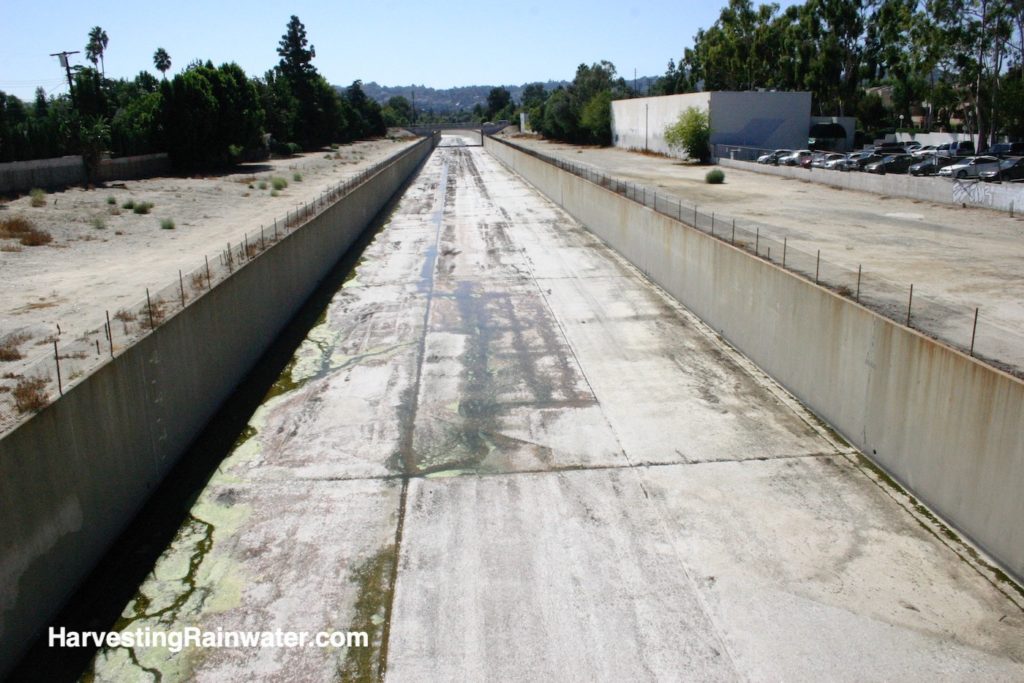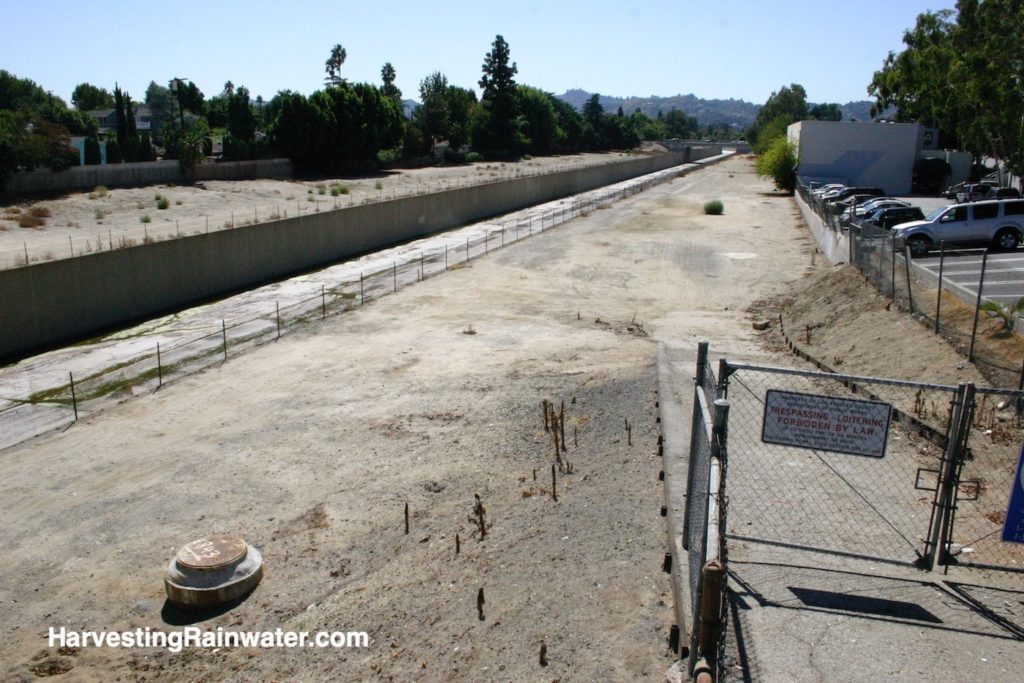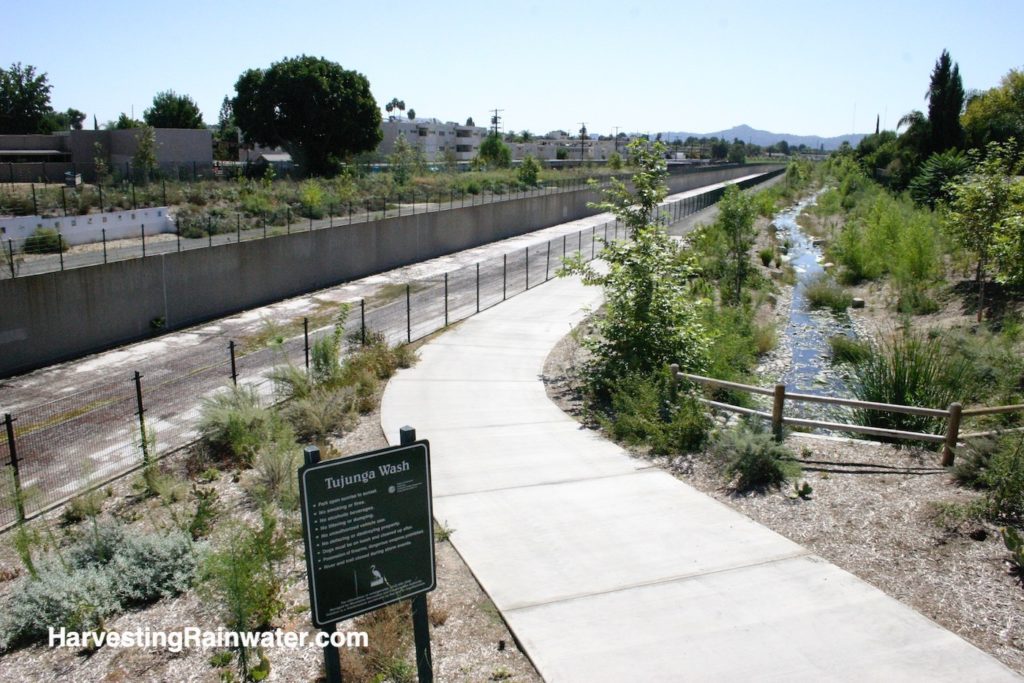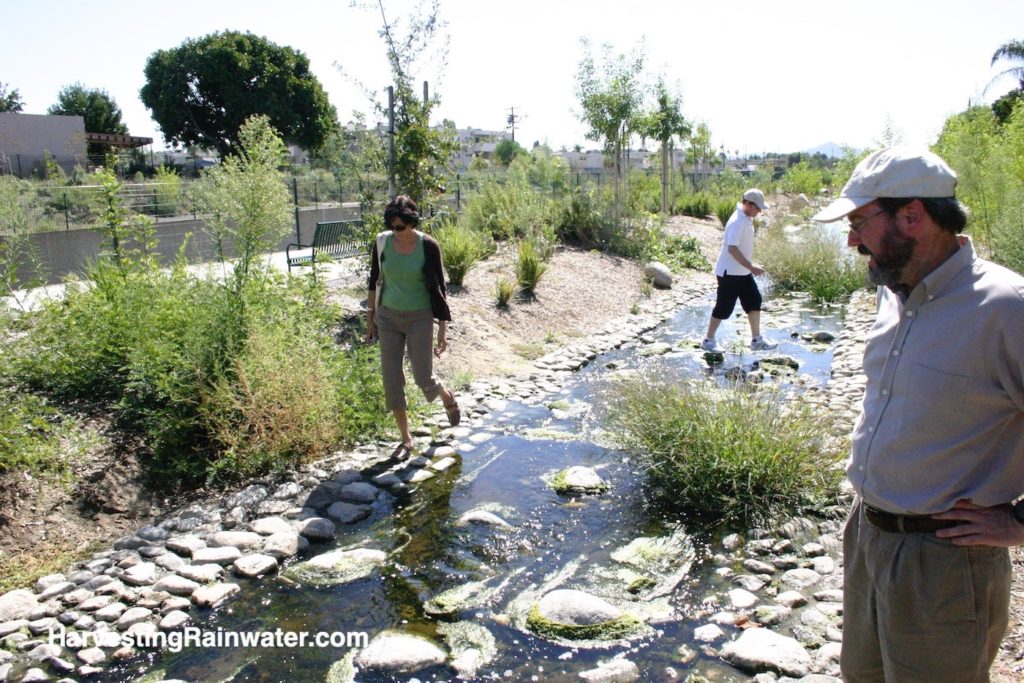Harvesting Urban Drool
© 2009 Brad Lancaster, www.HarvestingRainwater.com
All around the world I see water wastefully flowing down urban street curbs and out of concreted storm drains even though it has not rained in months. It is not stormwater I see flowing. It is urban drool. Others call it “nuisance runoff” – water from leaky pipes, driveway car washes, over-watered landscapes, and so on – our waste. But it can be a resource. It can be harvested.

Photo: Brad Lancaster
That is what is happening in Los Angeles, California, along a mile-long stretch of the Tujunga Wash Flood Control Channel between Vanowen Street and Oxnard Avenue. It is bringing myriad forms of life back to this community.
Between 1950 and 1952 the U.S. Army Corps of Engineers cleared a 9-mile section of the waterway of its vegetation and lined it with concrete in order to drain the water out of the community as quickly as possible. The goal was flood control, but it also dehydrated the watershed and its aquifer, removed the natural water filter, and created a fenced-off sterile blight.

Photo: Brad Lancaster
That is now beginning to be reversed with the Tujunga Wash Greenway and Stream Restoration Project. A stream has been recreated and replanted with native riparian vegetation on the upper banks of the concreted channel. The new stream is fed by water diverted upstream from the channel through a half-mile-long pipe. Much of this water is urban drool, which flows year round. As the water flows through the greenway, it is filtered and cleaned by sand, gravel, and tree roots. Some percolates into the ground (helping recharge the aquifer); the rest is returned to the flood-control channel via another pipe. It teems with life and invites one to step off the wide pedestrian/bicycle path lining the stream to explore and play.

Urban drool has been redirected to water restoration plantings along public walkway.
Photo: Brad Lancaster
Much of this life acts as a living seed-bank for indigenous plants, whose seed can help revegetate both downstream areas as water and seed flow downstream, and upstream areas as wildlife walks and flies upstream with seed in tow.
As this life resides on the upper banks it is unlikely to be washed out in big floods. The floods will scour down the concreted channel, leaving the life in its protective upper bank eddy to replant what is scoured – and to germinate still more life not yet seen.

Photo: Brad Lancaster
It is a small step. A beginning. An invitation to revalue and rehabilitate our waterways so they once again are regenerative corridors of water, pedestrians, and wildlife.
For more on this dynamic project see:
http://ladpw.org/apps/news/pdf/2380_2618.pdf
For more ideas, strategies, and stories on how to harvest urban drool and rainwater runoff to generate more life higher in the watershed of our built environments see:
– Street Orchards for Community Security
– Parking Lot to Parking Orchard
– Farming in the City with Runoff from a Street
and
– Rainwater Harvesting for Drylands and Beyond, Volume 2: Water-Harvesting Earthworks
And thank you to David O’Donnell of TreePeople for guiding me to this project and its resources.
See the new, full-color, revised editions of Brad’s award-winning books
– available a deep discount, direct from Brad:

Volume 1

